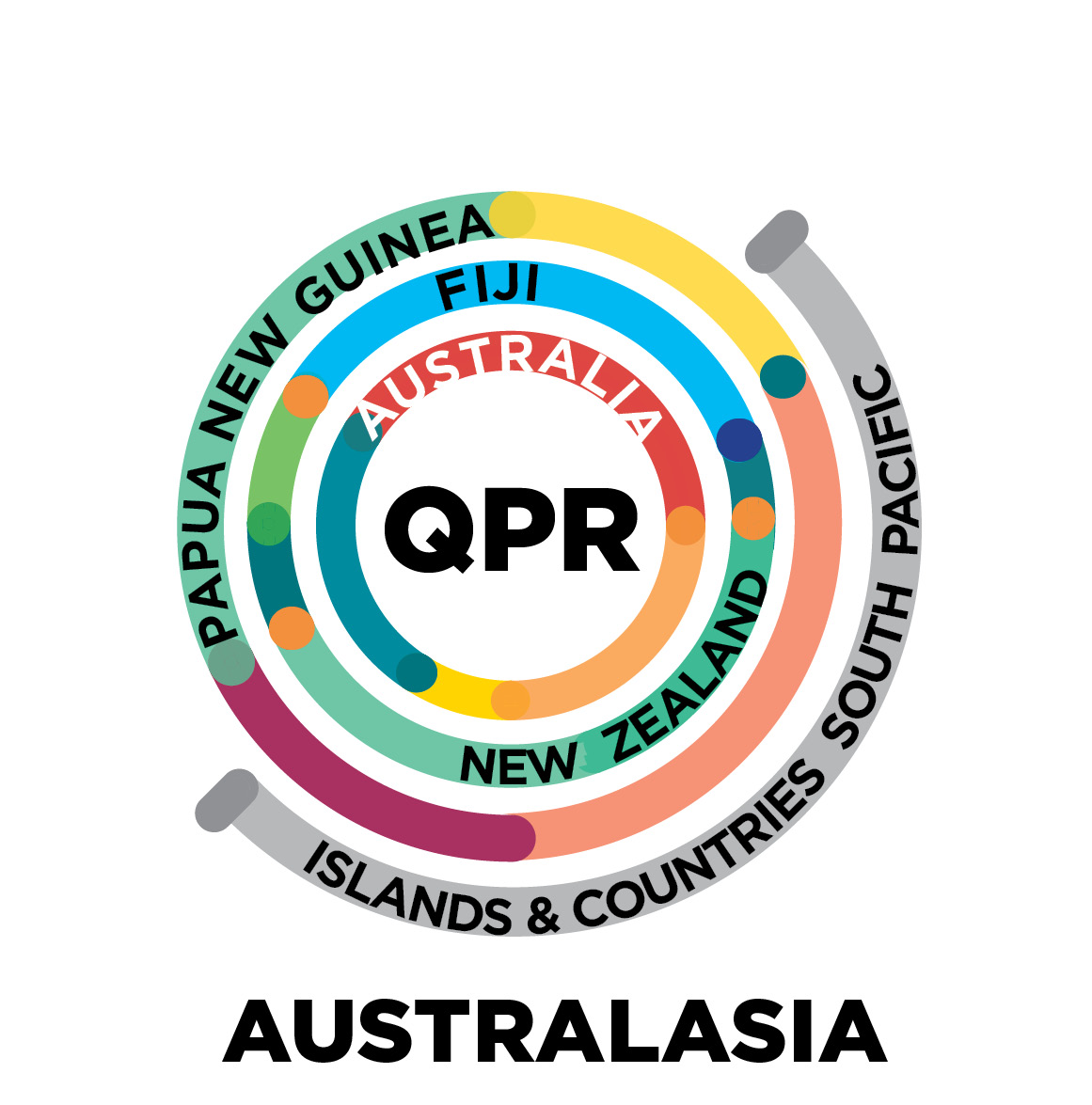
QPR for School Health Professionals
This training program is for School Health Professionals and is an extended version of the NREPP-listed QPR Gatekeeper Trained for Suicide Prevention best practice program.
This online, multi-media interactive course teaches school social workers, nurses, psychologists and school counselors how to detect, screen, and refer troubled youth identified by you or others in your work setting. This course does not teach suicide risk assessment. If you are tasked with conducting a suicide risk assessment we recommend the QPR Suicide Triage course, or if you are clinician who will carry out a treatment plan which integrates your suicide risk assessment into that plan, we recommend the advanced QPRT Suicide Risk Assessment and Risk Management training program listed here.
The suicide screening and referral method we will teach you in this course, the specific questions you will use to converse with and initially screen a troubled youth, have been asked of more than 100,000 suicidal people to date, many of them while being screened or evaluated for psychiatric hospitalization or in emergency situations. Since inception in 1999, no adverse consequences have been reported for the QPR intervention.
$103.00
The suicide screening and referral method we will teach you in this course, the specific questions you will use to converse with and initially screen a troubled youth, have been asked of more than 100,000 suicidal people to date, many of them while being screened or evaluated for psychiatric hospitalisation or in emergency situations. Since inception in 1999, no adverse consequences have been reported for the QPR intervention.
This expanded version of QPR Gatekeeper Training for Suicide Prevention includes a number of modules focused on youth at risk, suicide prevention programs for schools, introduction to creating a culture of school safety, how to restrict access to lethal means, a review of helping skills especially effective with suicidal youth, a step-by-step screening and referral process, and a sample return-to-school policy and procedure for suicidal youth who screened positive for suicidal thoughts, feelings, intent, plans and past attempts.
Highlights:
- Course time required: 3-4+ hours depending on reading speed and how much time the learner chooses to explore web links, bonus modules, and practice the intervention with colleagues.
- Some school health professionals will be comfortable working with suicidal youth; others may not. The course provides content helpful to those who may not have had much specific training in suicide prevention.
- The training is applicable to working face-to-face, on the phone, or even in the text-only world of cyberspace, and some of the interactive practice challenges are in text.
- The final QPR quiz is a 15-item nationally standardised review of the core elements of the QPR program, and is followed by a video review (adult actors) as well as a text-only practice challenge of the screening intervention.
The four primary goals of the QPR Institute are to:
- Raise public awareness about suicide and its prevention.
- Provide low-cost, high-tech, effective, basic gatekeeper and intervention skills training to lay persons who may be able to prevent a suicide.
- Provide suicide prevention and intervention training programs for a variety of professionals and for undergraduate, graduate and post-graduate students preparing for careers in the helping professions.
- Reduce morbidity and mortality of suicidal persons served by health care, correctional, workplace, hospital and other institutions and settings through a systems approach to suicide risk reduction that enhances first responder and clinical competencies to detect, assess, monitor, manage and treat persons known to be at elevated risk for suicidal behaviours.
As of this writing in the winter of 2014, the Institute has trained more than 15,000 Certified Gatekeeper Instructors who have, in turn, trained more than two million gatekeepers worldwide. In addition, thousands of clinical health care providers have been trained in how to detect, assess, and manage suicidal consumers.
If this sounds like an "army" of people helping to prevent suicide, it is. Now, with your help as school social workers, nurses, counsellors and psychologists, we will create a new division in that army of professionals trained to help prevent youth suicide.
Background
Key elements of this modularized training program were initially developed and tested with a number of crisis centers in the State of Washington under a contract with the Washington State Department of Health and the Youth Suicide Prevention Program.
In this course you will learn QPR, one of the most widely taught suicide prevention gatekeeper training programs in the world.
Need
Suicide rates among young people are unacceptably high. In Australia, there are eight young people and children lost to suicide every week. Since 2006, there has been an increase of 32% in Australian youth suicides. One death is too many. The need for prevention efforts is great.
Because your school district may be small, it would be a mistake to assume suicide risk is low and training unwarranted. Small school districts serve rural areas where in Australia, sadly, youth suicide are among the highest suicide rates in the world.
Young males in regional and remote areas were approximately twice as likely to suicide than their young males in urban areas. Aboriginal and Torres Strait Islander youths are at higher risk - it has been found that young female and male Aboriginals and Torres Strait Islanders are up to six times (or higher) as likely to die by suicide than other Australians.
Even though your school district is small, risk for youth suicide is far from zero. In fact, it appears twice as high.
Universal intervention
While the QPR intervention was developed specifically to detect and respond to persons emitting suicide warning signs, QPR has also been more widely applied as a universal intervention for anyone who may be experiencing emotional distress. It has been suggested by independent researchers and federal leadership that originally funded and conducted QPR studies, that the QPR intervention could be useful in a much broader application, and not just for the detection of persons at risk for suicide.
Thus, by learning QPR and applying this screening system in your work, you will likely screen and detect many youth are false positives (not suicidal), but still in need of assistance, assessment, and perhaps intervention and treatment. For example, one can imagine that a youth experiencing a personal crisis may very well send interpersonal distress signals/warning signs and would benefit from help of some kind, but may not be considering suicide as a solution. In fact, most distressed and depressed youth are not considering suicide, but are still in need of help.
When QPR is applied to distressed youth with informed compassion and understanding, the intervention becomes useful for the detection of a wide range of "troubled" behavior, e.g., non-suicidal self-injury (NSSI), perfectionism, eating disturbances, sleep problems, bullying, and other behavioral indices of youth who may be at risk, identified, and treated "upstream" of the onset of suicidal ideation.
Research
Two random clinical trials testing the efficacy of QPR training were conducted in school settings and published by independent research teams from the University of Rochester, thus establishing the following expected outcomes for this training program:
- Increased declarative knowledge
- Increased perceived knowledge
- Increased self-efficacy
- Increased diffusion of gatekeeper training information
- Increased gatekeeper skills (ability to engage in active listening, ask clarifying questions, make an appropriate referral)
This training is not a substitute for a university degree in counselling or other helping profession, nor can it provide the face-to-face supervised experience those in the helping professions are provided in the course of their professional career development.
This knowledge and skill-based training program teaches recognition and response skills limited to identification, detection of potential risk through a standardized screening process, and referral and follow-up methods supported by rigorous research.
- Participants must be at least 18 years of age
- If employed by, or volunteering for, an organisation, participants agree to accept all expectations and employment rules of their parent organisation. The QPR Institute does not vet or otherwise qualify students for this course.
Modularised in a rich mix of text, video, voice-over PowerPoint™ lectures, interactive practice sessions, and other state-of-the-art e-learning technologies, the QPR for School Health Professionals certificate awarded at the end of the program requires completing all online modules and passing required knowledge quizzes. Additional classroom practice sessions and downloadable role-plays with instructions are strongly recommended.
Goals and Objectives:
- Describe three program options/interventions for reducing youth suicide attempts and completions.
- Describe the implications for training and practice in the screening and referral or care of at-risk youth.
- Describe QPR theory and a systems approach to creating safer schools for at-risk youth.
- Describe the research which supports particular interpersonal approaches most effective with suicidal youth
- Apply basic intervention skills to case-based scenarios
- Immediately reduce the acute distress, despair, and hopelessness of suicidal youth through an empathic, understanding screening interview in which protective factors can be brought into play to create a safety and referral plan to reduce the risk of a suicide attempt
- Recognise someone at risk for suicide
- Demonstrate increased knowledge of intervention skills
- Describe knowledge of referral resources and how to refer someone to help
- Understand suicide as a national and local public health problem
- Understand the common myths and facts surrounding suicidal behavior
- Describe the relationship of untreated clinical depression and other mental illnesses and substance abuse to increased suicide risk
- Understand means restriction and how to immediately reduce risk
- Recognise and identify three risk factors for suicide
- Recognise and identify three protective factors against suicide
- Demonstrate how to ask about potential suicidal desire or intent (in role-play)
- Demonstrate how to listen and persuade someone to get help (in role-play)
- Demonstrate how to make a referral for professional assistance (in role-play)
- Describe community and national resources and how to access them
- Explain why reducing access to lethal means is an effective way of saving lives
- Describe the role of impulsivity, ambivalence, and differing lethality of methods in contributing to suicide deaths and attempts
- Describe how counselling on access to lethal means fits into suicide prevention counselling
- Ask your students about their access to lethal means and work to reduce access




